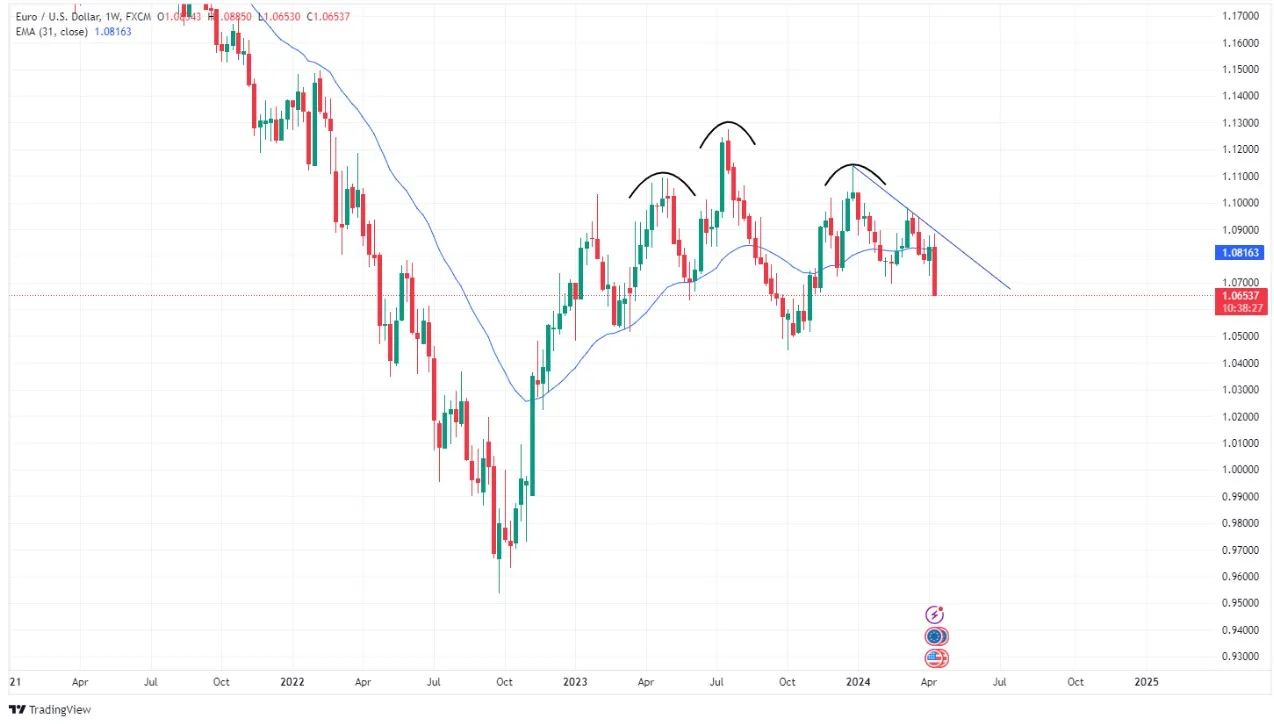
EURUSD may see a steep decline
The EUR/USD exchange rate is a critical indicator of the economic relationship between the Eurozone and the United States, reflecting the supply and demand dynamics of each currency in the global market. This exchange rate is influenced by a complex interplay of economic factors, political events, and market sentiment. Understanding the factors affecting the EUR/USD exchange rate is essential for businesses and individuals to make informed decisions.
Economic Strength
The economic health of the Eurozone and the United States plays a significant role in determining the exchange rate. A robust U.S. economy tends to attract global investment, increasing demand for USD and strengthening its value against EUR. Similarly, a strong Eurozone economy can bolster the EUR, leading to a weaker EUR/USD exchange rate.
Interest Rate Differentials
Central bank interest rate decisions can significantly impact exchange rates. Higher interest rates in the Eurozone entice investors seeking higher returns, leading to increased demand for EUR and bolstering its value against USD. Conversely, higher interest rates in the United States can attract investors to the USD, weakening the EUR/USD exchange rate.
Commodity Prices
The Eurozone’s and the United States’ economies are influenced by different commodity prices. For instance, rising oil prices can lead to a stronger EUR, while falling oil prices can weaken the EUR against the USD. Conversely, fluctuations in commodity prices, such as agricultural products, can impact the USD’s value against the EUR.
Political and Social Factors
Political instability, social unrest, or natural disasters can introduce uncertainty and raise risk perception, potentially affecting the exchange rate. For example, trade disputes, imposition of tariffs, or evolving trade agreements between the Eurozone and the United States can exert an impact on the EUR to USD exchange rate.
Monetary Policies
Central banks’ monetary policies, such as quantitative easing, can significantly impact exchange rates. For instance, the European Central Bank’s (ECB) decision to introduce a negative deposit facility interest rate has weakened the EUR against the USD.
Technical Outlook -EURUSD

If we look at the weekly chart in EURUSD, a head and shoulders pattern is formed. When the Head and Shoulders pattern is formed, a sharp falling is seen, as we are seeing in the chart, after breaking the support of 1.0800, a good fall is seen below. EURUSD is going to test its 1.0480 support. If it breaks 1.0480 then targets can be seen at 1.0110-0.9900 and then till 0.9700.
Happy Trading!
Commodity Samachar
Learn and Trade with Ease
Also Read: Forex News Letter: Crude Oil Mimics USA Dollar’s Trajectory?, USDCAD Sharply Rising – Will it test weekly resistance levels?
Recommended Read: The Commodity Market — Why is it advantageous to traders?
Want help on your trades?
Chat With Our Analyst